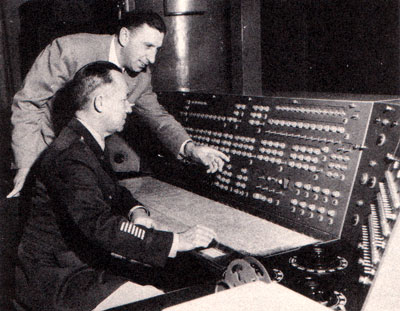
Whatever Happened to RCA — The Computer Company
by John C. Dvorak
The sixth “dwarf” in our IBM and the Seven Dwarfs Saga is RCA a pioneering electronics company.
RCA came out of Thomas Edison’s General Electric Corporation and was to specialize in exploiting the recently developed wireless radio system (invented by Marconi in 1895). Hence its name, Radio Corporation of America. Eventually RCA would add the Victor division and become known to many as RCA Victor. This group was to commercially exploit Edison’s invention of the phonograph.
But the formation of RCA was unusual. During WWI the government took over all patents regarding wireless and it asked General Electric to organize a US-based radio operation. RCA was formed thus in 1919 and it took over the assets of American Marconi and given a monopoly for broadcasting. The commercialization of broadcasting didn’t take off until the marketing genius David Sarnoff arrived at RCA and became President in 1930.
Soon a series of inventions poured from RCA including the first radio photograph, black and white and color television and numerous electronic devices mostly related to broadcasting.
Throughout this period Westinghouse and GE were in bed with RCA as the company grew. Shortly after the 1929 crash the company formed the RCA Radiotron Company to manufacture radio tubes along with a Westinghouse tube factory which already was producing 20,000 tubes a day. The government stepped in in 1932 and busted up the GE-RCA-Westinghouse combine under a trust-busting action. It actually improved RCA’s fortunes. The company then invented the sound-on-film technology which catapulted it into Hollywood where it opened RKO studios to exploit its talkie technologies. It built Rockefeller Center during this era and its broadcasting business was so successful that it had to split into two networks — the Red and the Blue networks.
After World War II TV would be the focus of most of its attention but since it was so deeply involved in tube technology and electronics the company saw no reason why it shouldn’t be a player in computers. And like everything else it did in these days it did it in a big way. The company even made its own core memories.
It’s history goes to the roots of computing as it apparently studied the market as early as 1945. It produced its first machine in 1947 for the US Navy. This was an analog machine called the Typhoon and used for simulations. As a major developer of vacuum tubes many companies worked with RCA in developing their machines. In fact the ENIAC team worked with RCA in that machines evolution.
By 1950 the company was looking into making a branded digital computers and chosen by MIT to help with the SAGE machines. While in 1952 acknowledging the transistor as the device to be used in computers of the future the first commercial RCA machine, the Bizmac, was all tubes and core memory. This was in 1956. The machine cost $4 million dollars and took up a room about the size of a 24 lane bowling alley. The machine epitomized the most ludicrous era of computing where machines cost a fortune and took up an amazing amount of space. Because the company sold only six of the machines and the performance was considered crummy this era was even more laughable.
The installation of a Bizmac at the Ordnance Tank-Automotive Command at Detroit, MI in 1955 was the largest ever. It took over 20,000 square feet and consisted of 375 separate equipment units. The $4.2 million system used 30,000 tubes and 60,000 diodes. There were 45 racks of “computer” and 180 tape stations. The system required two “operators” each with a duplicate operator called a “verifier” (four total operators) to make sure that all operations were redundant. They trusted the computer more than the human operators. The memory (core-type memory) for this huge machine was a whopping 8K. The rotating drum memory was 32K in size and had a 5.12 ms access time. The data transfer rate from the drum to the core memory was about 100,000 characters per second. The machine itself required 360 KW to operate and the air conditioning system (a 15 ton unit) was 500 KW.
This machine probably epitomized the potential for excess during the mainframe era. The smallest Bizmac, which had 5000 tubes costs $1.3 million.
In the publication from RCA called “The Bizmac Story” there are insights into this dinosaur era regarding what was exactly were computers good for. Specifically it defines (in the 1955 era) the difference between business computing and scientific computing. Although the Burroughs B5000 was considered the ultimate combination and all-purpose computer, the Bizmac, although a monstrosity, considered itself in the same category. Anyway the description of scientific computing in the Bizmac books went like this: “Scientific problems involve a relatively small amount of numerical input and rather large amounts of internal computation. The output…often exceeds the input.” Business computing, on the other hand “involve a very large amount of input and output information, but relatively simple computations.” This is the key to the notion in the mid 1970’s that microcomputer “we not real computers.” Somewhere after 1955 the I/O-oriented business computer defined computing in general for the next 20 years.
From there RCA moved, in 1958, to the transistorized 501 of which three were delivered before 1960 although over 40 were on order. Again these machines were not good performers.
During this era a curiosity of computing was developed which was intended to substitute for the drum and disk memory systems. RCA had developed a fast access data storage system which used short strips of mag tape to store data. It was called RACE whose acronym does not appear in the literature. Sperry had a similar system it called FAST-RAND and NCR had something called CRAM. All were considered flops.
Meanwhile bigger marketing problems plagued the company. The word on the street was that RCA wasn’t really interested in computing. This wasn’t helped by cost overruns. The next machines came out in the 1960’s. They were the 601 and 301. The 601 cost too much to build and had to be kludged together with a lot of coax cable interconnections. RCA was simply not up to the chore of making computers efficiently. While it had a lot of licensing deals with the likes of Bull, Siemens, Hitachi, Philips and Telefunken it didn’t seem to have what it took to be a player and it abandoned the business completely in 1971.
It’s hard to say that its poor showing in the computer industry was a turning point down for the company. But it was never again a player like it was in the 1930’s. This was exacerbated by the death of David Sarnoff in 1970.
Ironically it was sold back to Mother GE in 1986 just after the housewares division was sold to Black & Decker. A year later GE sold the consumer electronics division to Thompson of France. Now the brand name “RCA” meaning Radio Corporation of America was French owned. It remains so today. A strange ending for RCA.
Links:
Other Dwarfs: Burroughs, Sperry Rand (formerly Remington Rand), Control Data, Honeywell, General Electric, RCA, NCR














